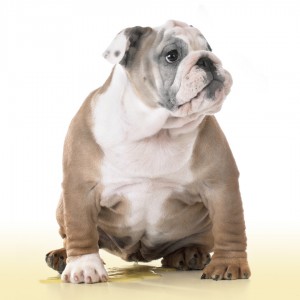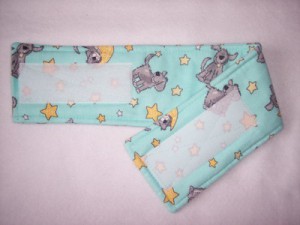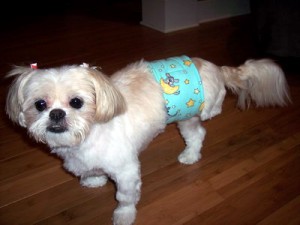 As pet home hospice veterinarians, we regularly help pet owners in Grand Rapids and West Michigan care for aging and terminally ill dogs and cats to keep these loyal companions comfortable during their final stages of life. One of the more common problems we face with these pets is incontinence.
As pet home hospice veterinarians, we regularly help pet owners in Grand Rapids and West Michigan care for aging and terminally ill dogs and cats to keep these loyal companions comfortable during their final stages of life. One of the more common problems we face with these pets is incontinence.
There are a number of reasons why your canine companion or feline friend has become incontinent with advanced age or illness, ranging from changing hormones, spinal or nerve issues, infections or a particular illness, increased stress, or simply aging. Though a licensed veterinarian should be the one to make a formal diagnosis, below we’ve listed some of the common causes of incontinence in dogs and cats and potential steps to mitigate the problem.
Top Causes of Pet Incontinence
• Urinary Tract Infections – UTIs can cause pets to lose bladder control due to increased frequency and need to void. Bladder infections are more often seen in female dogs than in males, and affect all ages, but are especially prevalent in senior dogs.
• Hormone Imbalance – Just as our hormones fluctuate as we age, this process also happens within our pets. A hormone imbalance or deficiency in older dogs, especially spayed females, may lessen their ability to keep their urinary bladder sealed shut, resulting in leaks or bigger accidents. During the doctor’s visit, she may prescribe a medication to help with urinary sphincter control. If your pet responds well, he or she may need to take these medications for the rest of his or her life. Fortunately, side-effects are pretty rare and usually mild.
• Diseases – The most common diseases that cause incontinence include diabetes (usually results in excessive thirst, followed by a predictably excessive amount of urination), kidney or liver disease, polyps or cancerous growths in the urinary tract or prostate, and bladder stones.
• Canine Cognitive Dysfunction Syndrome (basically this is the dog equivalent of human Alzheimer’s disease) can lead to old dog incontinence problems too. Dogs with CDS can ‘forget’ the house training habits they’ve known since they were puppies. Studies show that about half of all dogs who are eight years or older show some signs of this condition. By age 11, it’s over 60%.
• Endocrine disorders – These disorders include Cushing’s Disease and Addison’s Disease.
• Stress-related Incontinence – Psychological or emotional issues like extreme stress or anxiety can also trigger old dog incontinence, although usually on a more temporary basis.
• Old Age – The aging process itself often means that muscles, nerves, and organs don’t work as well as they used to. Lack of muscle tone or weak nerve impulses can cause a loosening of the bladder sphincter (muscle at the ‘neck’ of the bladder, which holds it closed) and cause your pet to unintentionally dribble urine.
Causes of Incontinence Specific to Cats
• Feline Cognitive Dysfunction Syndrome – This age-related feline disorder has roots in neurological degeneration in cats age 10 or older and is a progressively debilitating condition whose signs resemble those associated in humans with Alzheimer’s disease and senile dementia. In addition to signs of spatial disorientation, lack of interest in playing, excessive sleeping, and indifference to food and water, cats suffering cognitive dysfunction syndrome will frequently urinate and defecate outside the litter box.
• Feline Arthritis – Felines suffering from arthritis may show overall stiffness, swelling of the joints, lethargy, lameness, decreased flexibility and discomfort when you pet or handle them in certain positions. You may also notice subtle behavioral changes, including decreased activity and a hesitancy to climb stairs or jump up on things. Many of these cats forego the litter box due to the pain caused by getting in and out of the box.
Treatment for Your Incontinent Dog or Cat
Urinary incontinence can be the whole problem, but it can also be a symptom of another underlying health issue. It is important to diagnose the underlying cause of incontinence so that your pet (and you!) don’t suffer needlessly. There are many effective treatments for incontinence issues, ranging from medications and supplements to surgery. In cases where medications aren’t indicated, there are still strategies for preventing complications from incontinence.
• Antibiotics – Incontinent pets have a much higher incidence of bladder infections. It is believed that with the more relaxed opening to the bladder, it is easier for bacteria to migrate up the urethra and colonize the bladder. These dogs may need to be on antibiotics until the incontinence is dealt with.
• Preventing Urine Scald – Dogs with urinary incontinence frequently suffer from urine scalding. Urine is fairly caustic, and if it remains in contact with the skin for long periods of time, it can cause severe irritations. It’s best to prevent this by keeping the skin clean and dry, using waterless shampoo and absorbent, waterproof bedding. If this is not enough, scalded areas can be treated with topical or other medications prescribed as needed.
•Hormone therapy or a Medication to help tighten the urinary sphincter can be effective for both female and male pets.
• Feline-Specific Strategies – For cats, treatment at home may include the prescription of anti-anxiety drugs in the case of CDS, pain medication for arthritis, and environmental interventions such as altering litter boxes for increased accessibility. Using flat pans for litter will help your cat avoid painful association with the litter box. Sometimes nutritional supplementation can help felines with cognitive dysfunction syndrome.
• Surgery – In cases of incontinence due to bladder stones, a protruding disc or congenital abnormality, surgery has likely already been tried or discussed with your pet’s routine care veterinarian. Usually, pet owners will have explored these options prior to contacting Heaven At Home for palliative and home hospice care. Dr. Brush and the Heaven At Home team can work hand-in-hand with a pet’s routine care veterinarian to ensure continuity of care and complete records. In this case, the Heaven At Home team will perform home visits and help with environmental interventions.
Doggie Diapers

 Many have found that doggie diapers help keep urine out of your dog’s bedding, your carpet, and your furniture. There are a number or dog-specific diaper options out there at pet stores.
Many have found that doggie diapers help keep urine out of your dog’s bedding, your carpet, and your furniture. There are a number or dog-specific diaper options out there at pet stores.
One of Heaven at Home’s favorites types of doggie diaper are local, homemade pet bloomers and belly bands that are easy to use and custom-fit. Our friends at the Pet Shoppe Boutique — Visit www.petshoppeboutique.com — in Grand Rapids make “Bloomers” for girl dogs and “Belly Bands” for boy dogs that we’ve had a high success rate with. One of the reasons this type of doggie diaper is especially effective is that the strong velcro closure ensures a snug fit and stays securely in place, preventing dangerous consumption of the disposable pads placed inside. At the same time, by placing disposable pads inside, the belly bands and bloomers are convenient to use. We recommend that clients who are managing dog incontinence equip themselves with at least three pair to always have a clean one ready.
Others have success using boy’s briefs to hold a diaper or pad in place, using the fly as a tail hole. There are also multiple varieties of doggie diapers that can be purchased at pet supply stores.
Whatever you use you need to be sure to change it as soon as possible when soiled to prevent discomfort or infection.
Warning – Do Not Allow Dogs To Eat Their Diapers – Dogs, in some unfortunate cases, have been known to eat their diapers when unattended. The absorbent material in disposable diapers may cause blockages and severe complications. It is recommended that you prepare a special room for your dog while you are away, rather than leave them unattended in diapers, especially if your pet has a track record of ingesting things they shouldn’t!
Easier-to-Clean Pet Bedding
Living with an incontinent pet means doing lots of laundry and having a fresh supply of bedding toppers. Orthopedic beds are an important source of comfort for senior dogs and cats and can be expensive, so we recommend topping them with inexpensive fleece blankets or other bedding that dries quickly and can tolerate whatever cleaning products you use to get the stains and stink out. The goal is to create clean, dry, comfort quickly and easily for your pet.
Try the following DIY Approaches:
- Pet bed wrapped in a trash bag, then covered with blankets (Note: Some dogs may be unwilling to use bedding with plastic under it.)
- Old towels
- Old bathmats (great because of rubber back lining)
Washable Pee Pads
Medical supply companies sell washable pee pads in a variety of sizes. They feature a top fabric that wicks moisture away from the skin to help prevent sores and a bottom material that keeps leaks from getting onto bedding or furniture. This can help keep your pet comfortable despite accidents while napping. These are Dr. Brush’s preferred solution for dry bedding.
An Away Space for Easier Cleanups
We also recommend having a space for your pet that’s easy to clean, keeps them comfortable, and prevents them from roaming the house while you’re away, sleeping, or they’re otherwise unsupervised.
The best way to go about this is with a child gate partitioning their area of the house, along with some sort of waterproof barrier between the permanent bedding (cushion etc.) and the washable blankets. Be on the lookout at fabric stores and garage sales for good, cheap fleece blankets.
There are many causes for pet incontinence, and it is important to manage the symptoms to improve the quality of life for both you and your aging fur family member. We would love to help you find ways to make your pet’s sunset years filled with fond memories instead of constant struggle.
For an in-home consultation on pet incontinence strategies, Contact Us.
